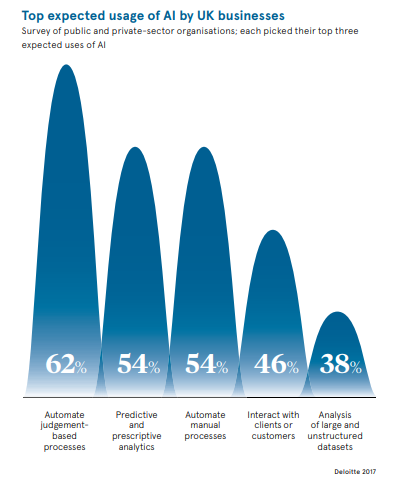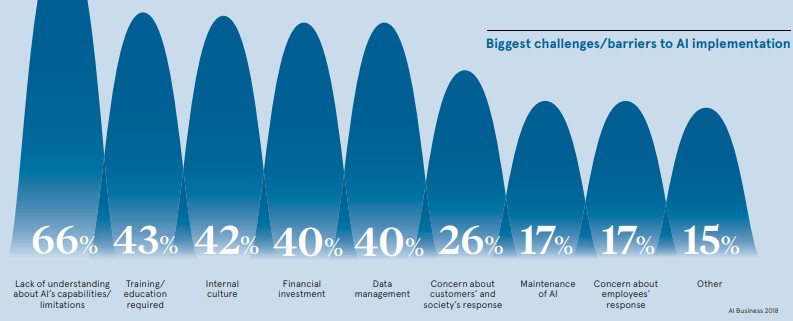- 5 June 2018
- Posted by: Peter Lunio
- Categories: Analytics, Artificial Intelligence, Lean Systems, social housing, Social Housing VfM Analysis, value for money
Perhaps it’s time to take a step back from the noise surrounding artificial intelligence (AI). There has been much hype promoting the technology’s potential to automate tasks, increase speed and accuracy and cut costs. But my concern is what’s the long-term plan? Most businesses lack a vision of how AI will transform their operations.

Developing an overarching AI strategy
Rather than the piecemeal adoption of AI systems, some believe businesses need to develop an overarching strategy for how to embed AI in their organisation over time.
There is a viewpoint that says that the first priority is having a comprehensive and holistic view of AI sourcing within your organisation. Working out what kind of AI is needed for different processes and whether these will be carried out in-house, outsourced or in partnership is an important step to developing a strategy.

If you take this view organisations need to base their AI strategy in four areas. (See figure above) Low-risk, low-value AI involves automating low-level repetitive tasks, such as data processing, which could potentially be outsourced.
Low-value, high-risk AI includes customer-targeting driven by machine-learning, which can cut the costs of identifying and reaching customers, and boost surplus by targeting the right customers. But this risks wasting budgets, if the targeting is wrong, and so is high risk.
The third area is high-value, low-risk tasks, such as developing credit scoring models. This offers high value but is low risk.
Finally, there is high-risk and high-value activity, the uncharted territory where there is no solution on the market, for instance using AI systems to fuel new product development.
The last two categories could involve building in-house solutions or buying in the expertise
If you can adopt these four frameworks, you might have an idea of when you need to migrate AI from one point to another. The belief is without having that comprehensive view, the organisation will not be able to move quickly and in an agile way from one category to another.

The key to a successful AI strategy: think big, start small and scale fast
There is some doubt that businesses have the time to develop in-depth strategies for AI and are best off implementing it as needed. There is an alternative view that companies should use AI to solve a specific business problem rather than being led by the technology. There is a fear that an AI strategy could be outdated before it gets implemented as developments are moving so fast.
This view suggests that when organisations try and introduce AI, they need to find a balance between their strategic ambition for AI and getting started quickly. There is a feeling that you can never have a strategy that is 100% correct, which can lead to deliberation and inertia. This view suggests that the best approach is to “think big, start small and scale fast”.
AI goals should be long-term and realistic
One of the fastest growing areas of AI is robotic process automation (RPA), which uses software to automate repetitive tasks, such as replying to standard emails, processing customer orders and updating payrolls. The real strength in AI is that it provides the tools necessary to automate more of an organisation processes.

There is a tendency for companies to invest the bulk of their budget in the technology, but spend too little on hiring the right kind of staff to manage the AI transformation.
The advice from the experts is that you should spend 20 to 30 % of your budget on the technology, but then 60 to 70 % of the budget goes on people.

Striking the right balance between forging a future-facing strategy and getting AI systems up and running will be a vital consideration for management as they embark on this revolutionary path.
Error: Contact form not found.

